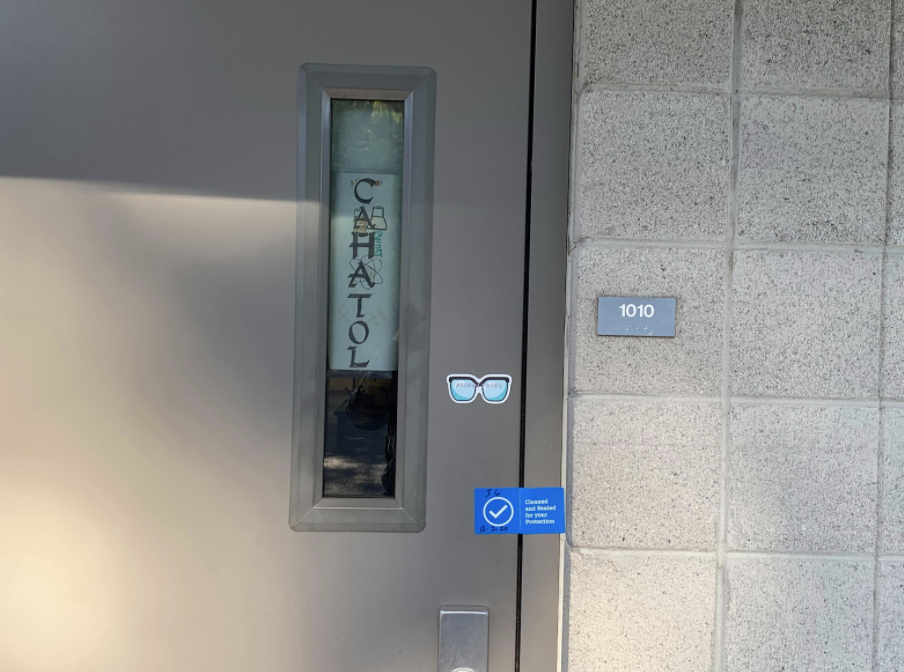In August, head of maintenance Paul Weir welcomed back the majority of his maintenance staff. They were hopeful of a quick return to campus for students and prepared to make classrooms safer.
Weir noted that while a lack of students on campus has made completing maintenance work somewhat more efficient in recent months, the coronavirus situation thrust additional responsibilities on them.
To prepare for future in-person learning, the district created new requirements for the maintenance staff to follow: more clean air in classrooms, a better filtration system and new sanitization procedures. To meet these requirements, the department adapted to more rigorous routines.
Weir especially emphasized the difference between “cleaning” and “sanitizing,” with the former referring to cleaning the exterior of an object and the latter referring to killing any existing pathogens — a much more involved process. The maintenance staff sanitizes all classrooms and bathrooms currently used by teachers and plans to extend sanitization to all classrooms once students are allowed on campus.
The intensified sanitizing process for classrooms involves first sanitizing all high-touch areas such as light switches and doorknobs. Then, the maintenance staff uses an electrostatic spray to clean surfaces like the underside of a desk. After leaving the room wet with disinfectant for around 10 minutes, the staff leaves a sticker on the door to indicate that the room has been sanitized and is safe for teachers to enter.
“Teachers who show up at that door know that this room has been sanitized,” Weir said. “We have some very seasoned, excellent teachers who are in a higher risk zone because of their age. If we want to open our schools, I think that teachers need to feel safe, and it's something we've been focusing on.”
The maintenance staff also conducts thorough sanitizations in the restrooms. Before the pandemic, the maintenance staff checked and cleaned the restrooms twice a day to make sure that they were clean for student use.
Because of the pandemic, however, the custodians use special equipment and disinfectant to wipe down surfaces every hour.
When students return to campus, students will be assigned specified bathrooms the way they were for the SAT and PSAT in November to mitigate possible spread of the coronavirus and allow for contact tracing.
In addition to maintaining facilities, workers are using this time to get ahead on previously planned projects. Their main priority has been correcting all the issues pointed out by the annual Facilities Inspection Tool (FIT) in April, in which a state official inspects every classroom and facility and notes defects like stained ceilings, missing tiles and broken light switches.
Other projects include putting some plastic barriers in high traffic areas to prevent close contact among students and installing more effective heating, ventilation and air conditioning systems to increase airflow in classrooms.
The maintenance staff also plans to renovate certain facilities in the main office to maximize safety. For example, they are putting a door leading to the nurse’s office in the administration building so that students who are sick don’t actually have to enter there to get tested.
Even with all the preparations, Weir said the situation remains uncertain as he does not think “anybody has the handbook and the playbook” for how to keep a workplace completely safe during a pandemic.
Despite the uncertainty, Weir is looking forward to seeing many more students return some time in second semester and is putting in as much effort as possible to ensure that students will feel safe and secure.
“I need the regular routine of the students back,” he said. “When the students are there, that is a huge driver for us — it’s fun serving the students and staff. We’re really looking forward to the students coming back, so long as it’s a safe environment for them and for us.”


























